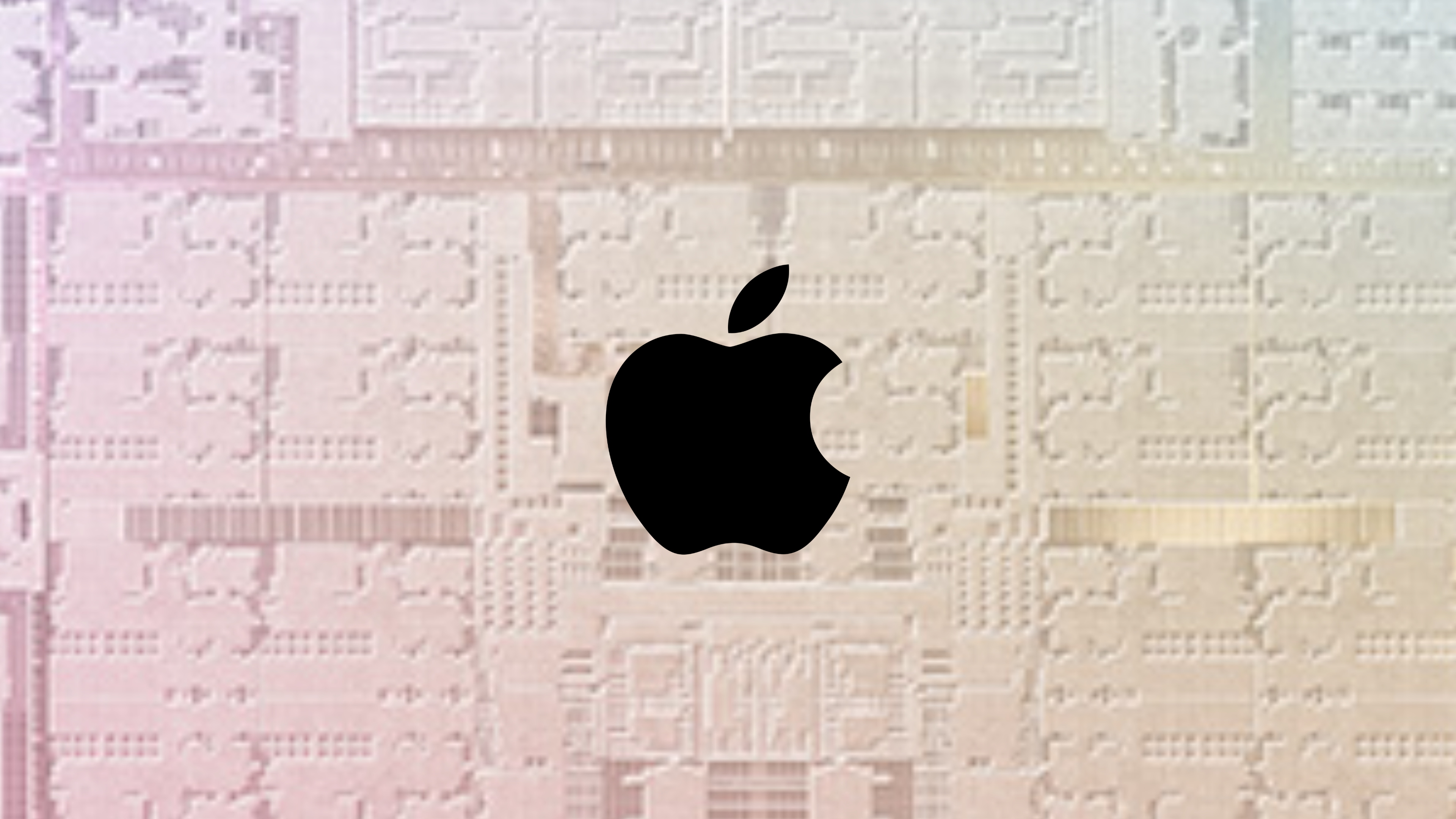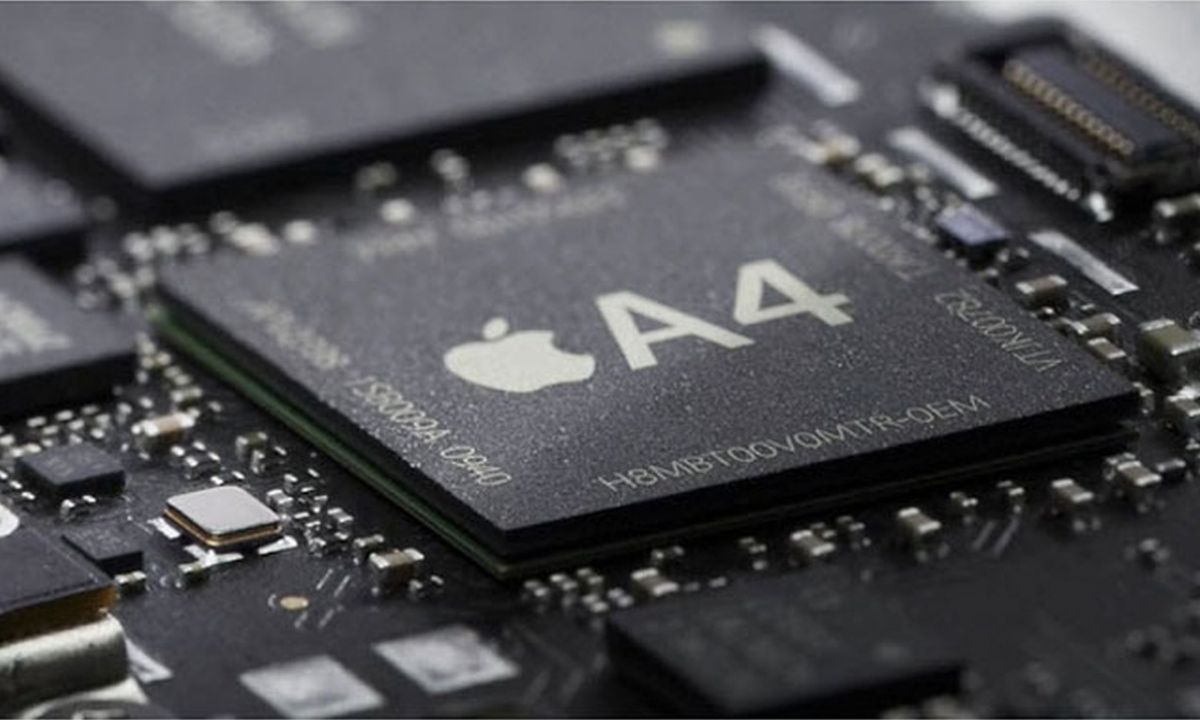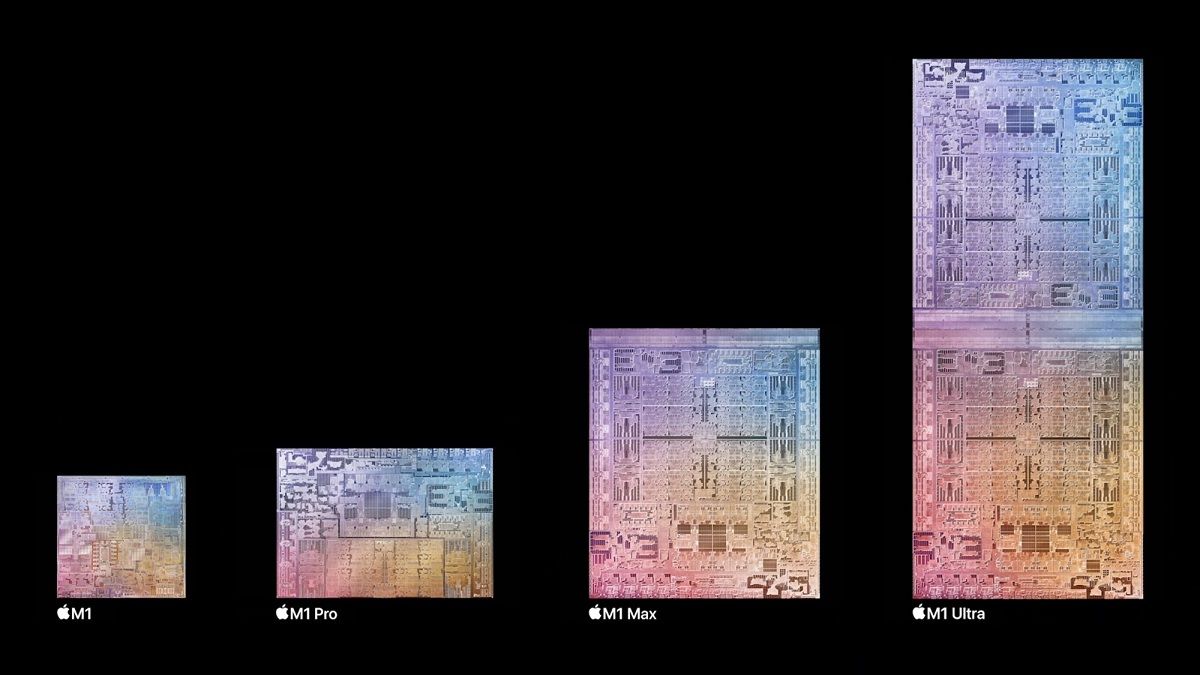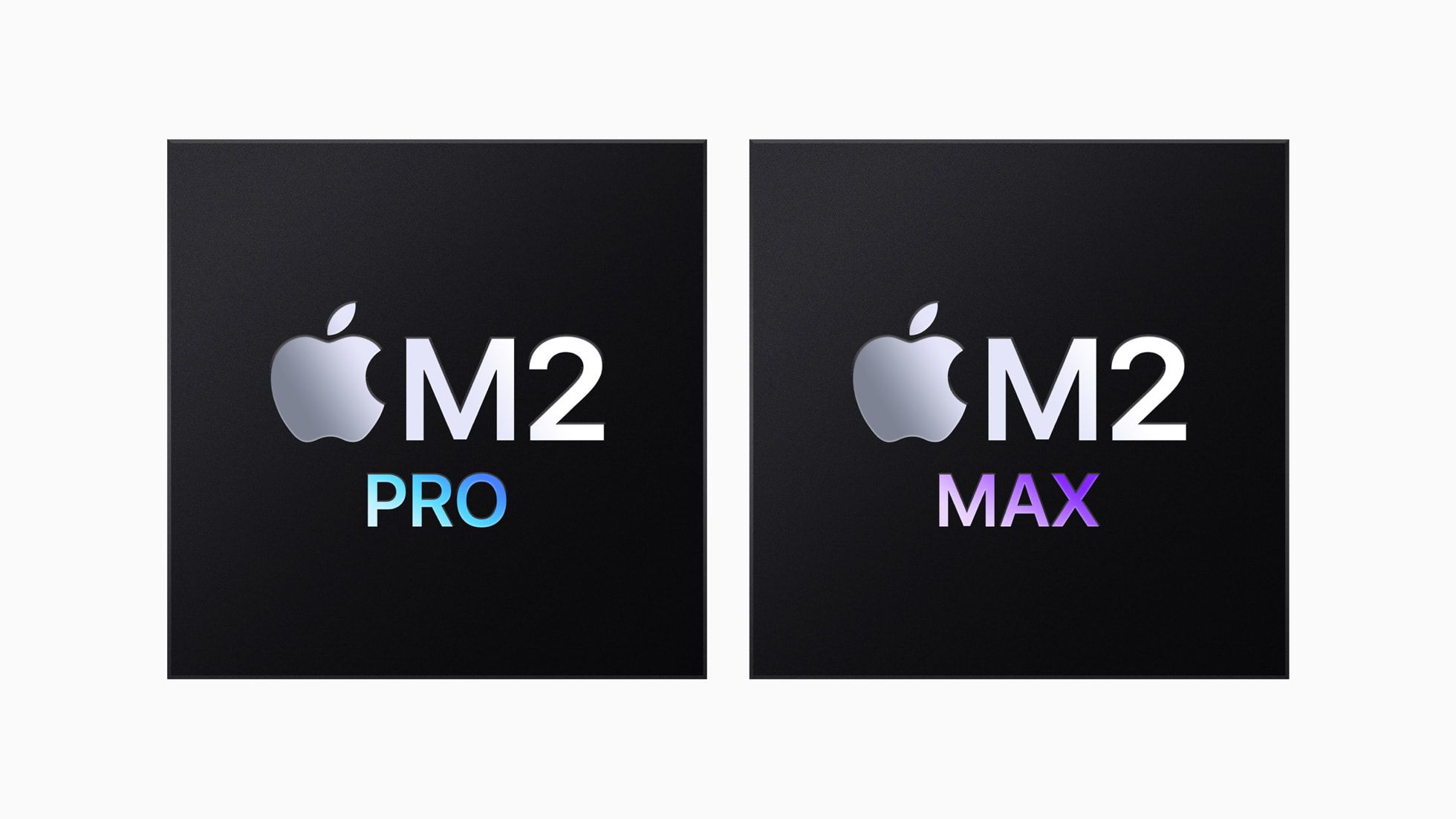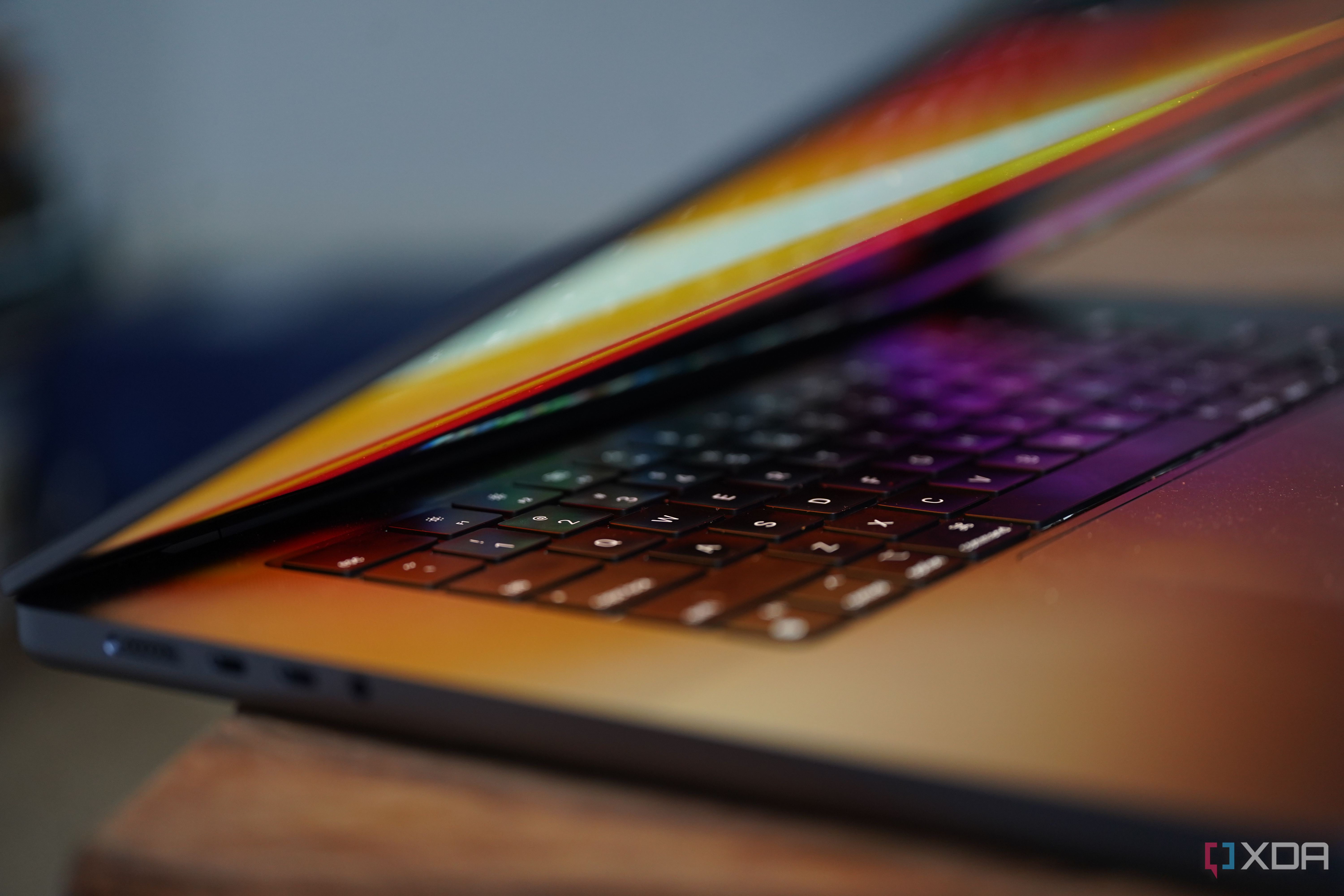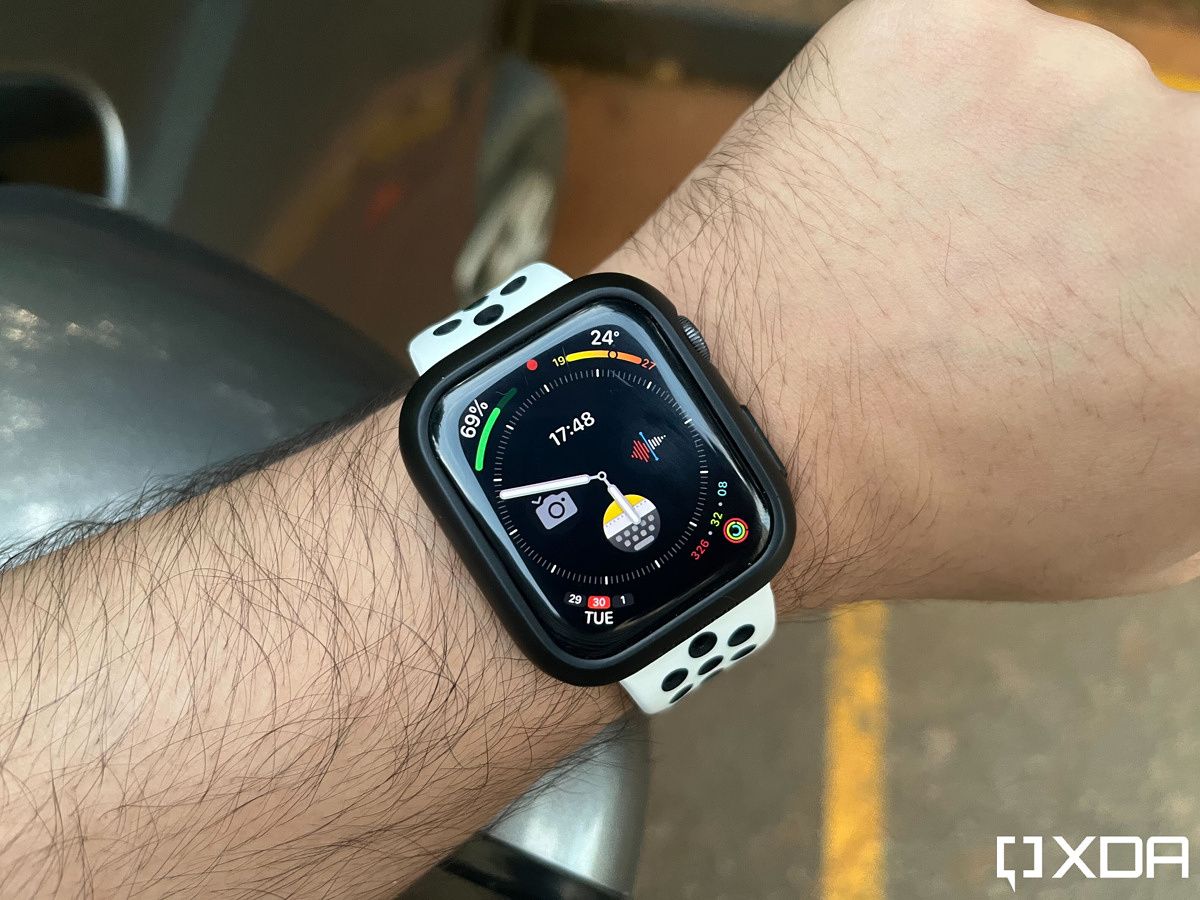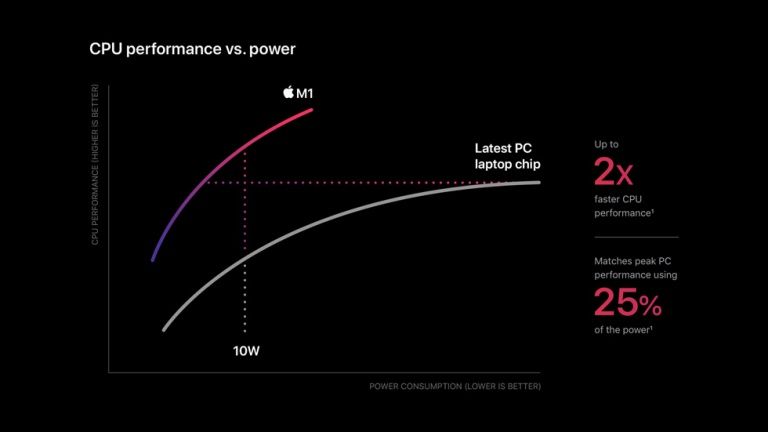Quick Links
On top of making high-end consumer hardware including powerful iPhones, excellent iPads, and more, Apple also produces a series of system on a chip (SoC). These SoCs are designed to be used in Apple's own consumer hardware products, and it mainly uses ARM architecture. In addition to the new Mac computers, a variety of different Apple devices, including iPhones, iPads, Apple TVs, Apple Watches, and more, use Apple Silicon.
Apple has been making its own SoCs for the iPhones, iPads, and more, under the A-series, way before it released the first M1 Mac chip in 2020. While we won't be taking an in-depth look at each A-series processor dating all the way back to 2010, we'll be including the ones that are still somewhat relevant.
Apple A-series family
The Apple A-series includes the family of SoCs that are used in various models of iPhone, iPad, iPod Touch, Apple TV, and more. The A-series SoCs integrate one or more ARM-based processors, a graphics unit, cache memory, and other components within the chip that are essential to provide an all-around computing experience.
The Apple A4 is technically the first SoC in the A-series. It's also the first chip that Apple designed in-house. The company used older SoCs like the APL0098, APL0278, APL0298, and APL2298 for its devices ranging from the original iPhones, the 2nd-gen iPod Touch, the iPhone 3GS, and the third-gen iPod Touch, respectively.
Coming back to the Apple A4, it was designed by Apple and manufactured by Samsung. The A4 commercially debuted in 2010, carrying an ARM Cortex-A8 CPU and a PowerVR SGX 535 graphics processor. This particular chip was first used in Apple's iPad, and later in iPhone 4. The A4 has since been discontinued by Apple, and it was replaced by the A5 chip that debuted in March 2011. Without getting into too many details, here's a quick look at each Apple A-series SKU that have debuted so far:
The latest chip in Apple's A-series lineup is called the A17 Pro, and it was announced alongside the new iPhone 15 Pro series during the "Wonderlust" keynote. This particular chipset, in case you're wondering, is a 64-bit ARM-based SoC manufactured using TSMC's all-new 3nm process, allowing the transistors to be packed more densely for better performance and efficiency.
The new A17 Pro chip is only included with the iPhone 15 Pro models for now, and the lower-end flagships of the year are powered by the A16 Bionic instead. Apple is promising a significant performance improvement with the A17 Pro, especially on the GPU side. The new chip features a six-core GPU that is said to be up to 20% faster, and it also supports hardware-accelerated ray-tracing.
-
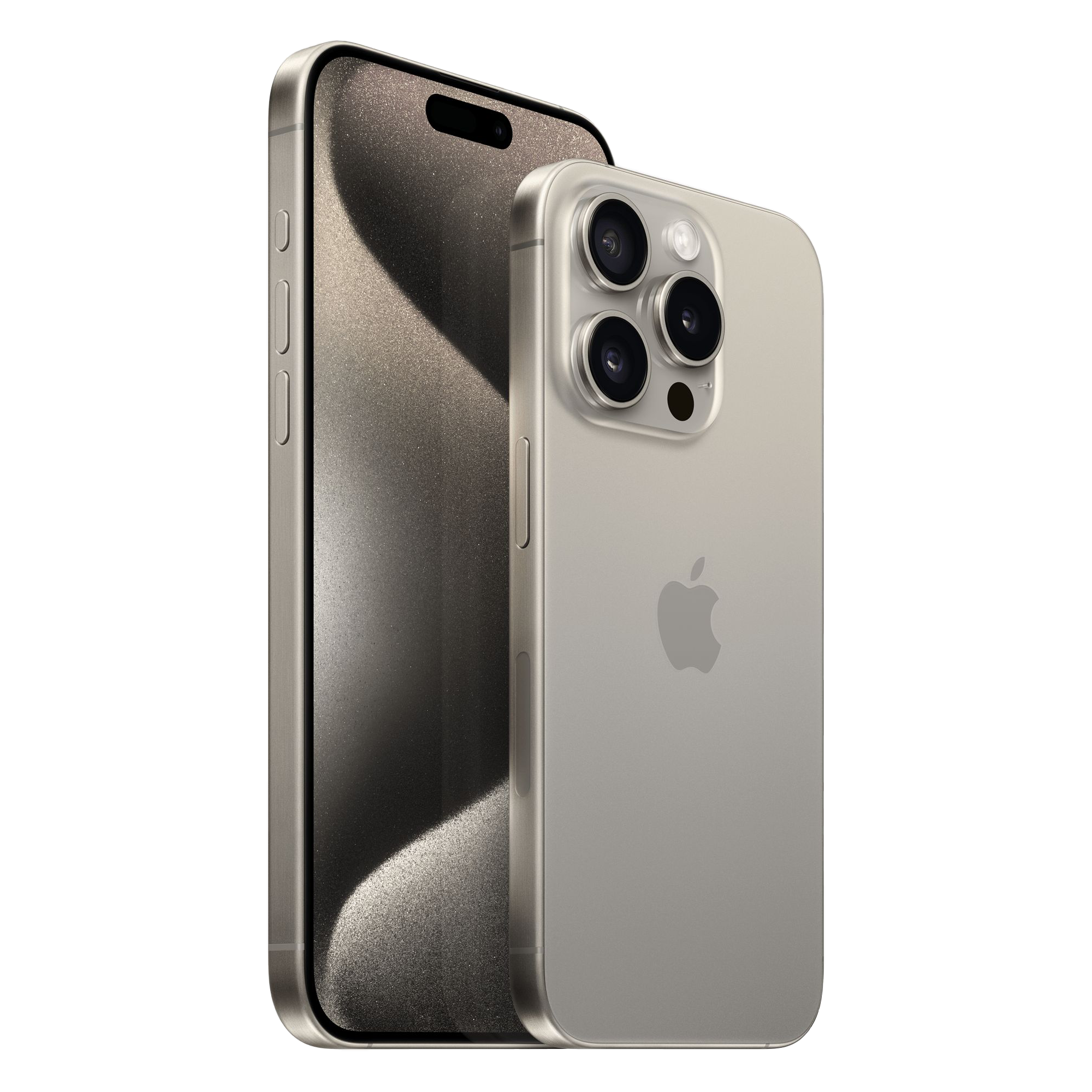
Apple iPhone 15 Pro
The iPhone 15 Pro delivers upgraded performance with the Apple A17 Pro chip, plus a new camera system with enhanced stabilization and other improvements. It's also one of the first iPhones with a USB-C port.
-
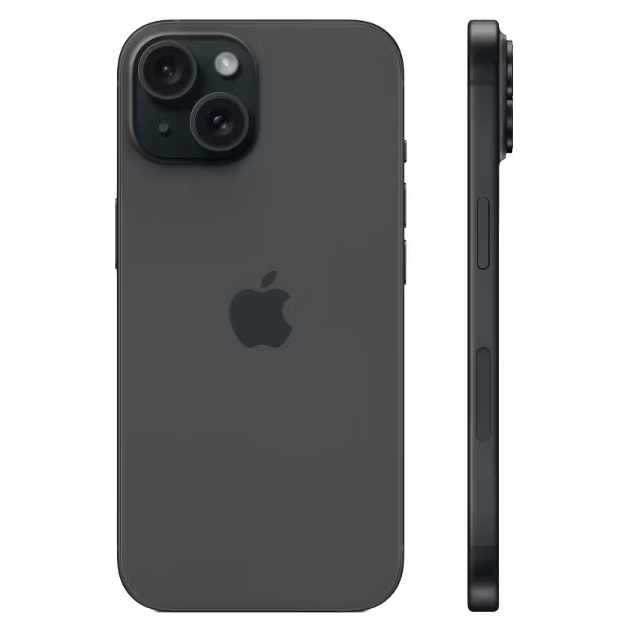
Apple iPhone 15
The base model iPhone 15 features a 6.1-inch OLED display, and a new 48 megapixel main camera for fantastic image creation. The iPhone 15 also features fast multitasking thanks to Apple's A16 Bionic chip.
Apple M-series family
Apple had been using its own chips for almost all of its devices except for notebooks and desktop computers. That, however, changed the arrival of Apple's M1 chip. The Apple M1 marked the company's entry as a competitor to Intel and AMD chips for personal computers. The M1 SoC debuted in November 2020 when it was used in the MacBook Air, Mac Mini, and MacBook Pro. Since then, the M1 chip has also made its way to iMac, the iPad Pro 5, and the iPad Air 5. The Apple M1 chip, in case you don't know, comes with four high-performance "Firestorm" and four energy-efficient "Icestorm" cores. It essentially offers a hybrid configuration similar to what we've seen in Intel's 12th gen Alder Lake processors.
In October 2021, Apple expanded the M-series family with the announcement of two chips: the M1 Pro and the M1 Max. Both processors upgrade upon the power of the M1 to offer a more refined and powerful user experience to "Pro" users through the 14-inch and the 16-inch MacBook Pro models. Following that, the company announced the M1 Ultra, which is one of the most powerful Apple Silicon to date. Unlike the other chips in the M1 family, the M1 Ultra is made for desktop computers. As a result, the M1 Ultra SoC is exclusive to Apple's Mac Studio desktop computer. It's an expensive piece of hardware that can cost up to $8,000 for a fully-kitted unit.
Apple then launched the M2 family of chips, including the base M2, M2 Pro, and M2 Max. These chipsets power the latest iPad Pro models, MacBook Air (2022), Mac Mini (2023), and more. One of the main differences between the two generations of M-series chips is that the M1 chipset was based on the same IP blocks as the Apple A14. The M2, on the other hand, is based on the same IP blocks as A15. The M1 chip also features "Firestorm" P-cores and "Icestorm" E-cores from the A14 Bionic chip, whereas the M2 offers "Avalanche" P-cores and "Blizzard" E-cores from the A15 Bionic chip.
The first set of M2 chips was followed by the M2 Ultra, which consists of two M2 Max dies connected together by a silicon interposer through the company's UltraFusion technology. The M2 Ultra was announced in June this year, and you can get it with Apple's Mac Studio and Mac Pro computers.
Rumor has it that Apple's new M3 chips won't be here until next year, so it could be a while until we see the next set of MacBooks and other Apple computers powered by the next-gen M-series chip. In the meantime, be sure to check out our MacBook Pro (2023) review to know more about the performance of the M2 Max chip. You can also head over to our Apple Mac Studio review if you're interested in the M2 Ultra's power.
With that out of the way, here's a quick look at different SKUs in the M-series:
-
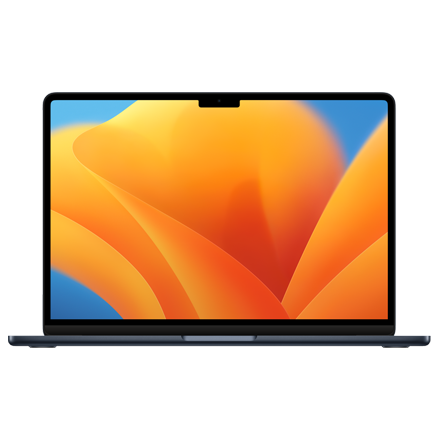
MacBook Air (M2)
The latest MacBook Air offers the M2 chip, and a redesigned chassis with MagSafe 3 support. It is powerful and can handle pretty much any kind of work, and it comes in either 13.6-inch or 15.3-inch sizes.
-
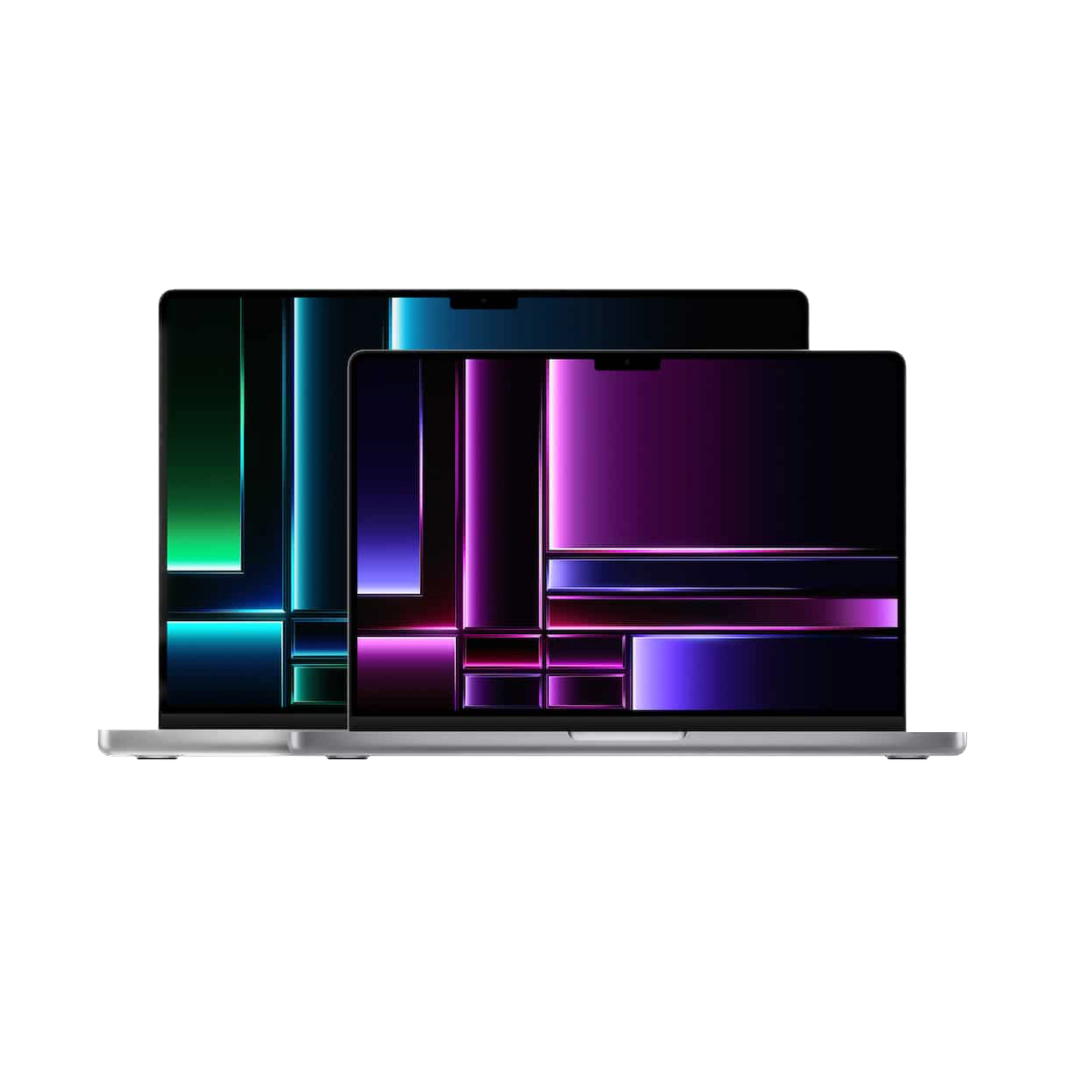
Apple MacBook Pro (M2, 2023)
The 14- and 16-inch MacBook Pro (2023) models adopt the same exterior chassis first introduced in 2021. They offer boosted M2 Pro and M2 Max chips, Wi-Fi 6E and Bluetooth 5.3 support, HDMI 2.1 compatibility, a notched display, and more.
Advantages of Apple Silicon
As we mentioned earlier, Apple has been making its own chip for years. All the chips used in years of iPhones, iPads, and even iPods were mostly custom-designed chips developed by Apple engineers. Being able to design its own chips allows Apple to make huge gains in overall performance and power efficiency. The company also makes custom software for these devices, which are designed to make the most out of the available hardware.
Apple Silicon has mostly — if not always — been about delivering the best performance while keeping power consumption at its lowest. This is one of the main reasons why Apple transitioned away from Intel chips for Macs. Using its own silicon for Mac computers has allowed the company to further boost Mac's performance and make it stand out from the rest of the chips on the market. Apple chips may not be the most powerful chips out there, especially when you compare them with other high-performance silicon from AMD, but they're definitely capable of going head-to-head with most consumer-grade mainstream processors from both Intel and AMD.
Apple Silicon: U, S, H, and W-series chips
In addition to the popularly known A and M series of chips, Apple also makes a few more chips in-house to be used in devices like the Apple Watch, its wearables, and more. Apple's 'S' series family of chips, for instance, are used in the Apple Watch. It's a customized chip that uses an application processor, memory, storage, and a couple of other support processors for wireless connectivity and more. The first generation of the Apple Watch was powered by the Apple S1 chip. The company has since launched various iterations of this chip. The Apple Watch Series 9 and the new Watch Ultra 2 both use the S9 chip, which is a custom 64-bit dual-core processor that works in tandem with the W3 wireless chip.
The W-series, on the other hand, is a family of SoCs and wireless chips that are designed by Apple for Bluetooth and Wi-Fi connectivity. Apple didn't introduce a new W-series chip this year. It's instead using the same W3 chip as last year inside the Apple Watch Series 9. There's also the Apple 'H' series chip, which Apple uses in headphones. The Apple H1 chip was first used in early AirPods models. It then made its way to other Apple audio products, including the AirPods Pro and the AirPods Max. Apple then released the improved H2 chip, which can be found in the AirPods Pro 2.
Lastly, there are Apple's U-series chips that use ultra-wideband radio to allow Apple devices to locate other Apple devices, such as iPhones, AirPods, etc. The company is using the new U2 chips inside its latest iPhones and the Apple Watch models in 2023.
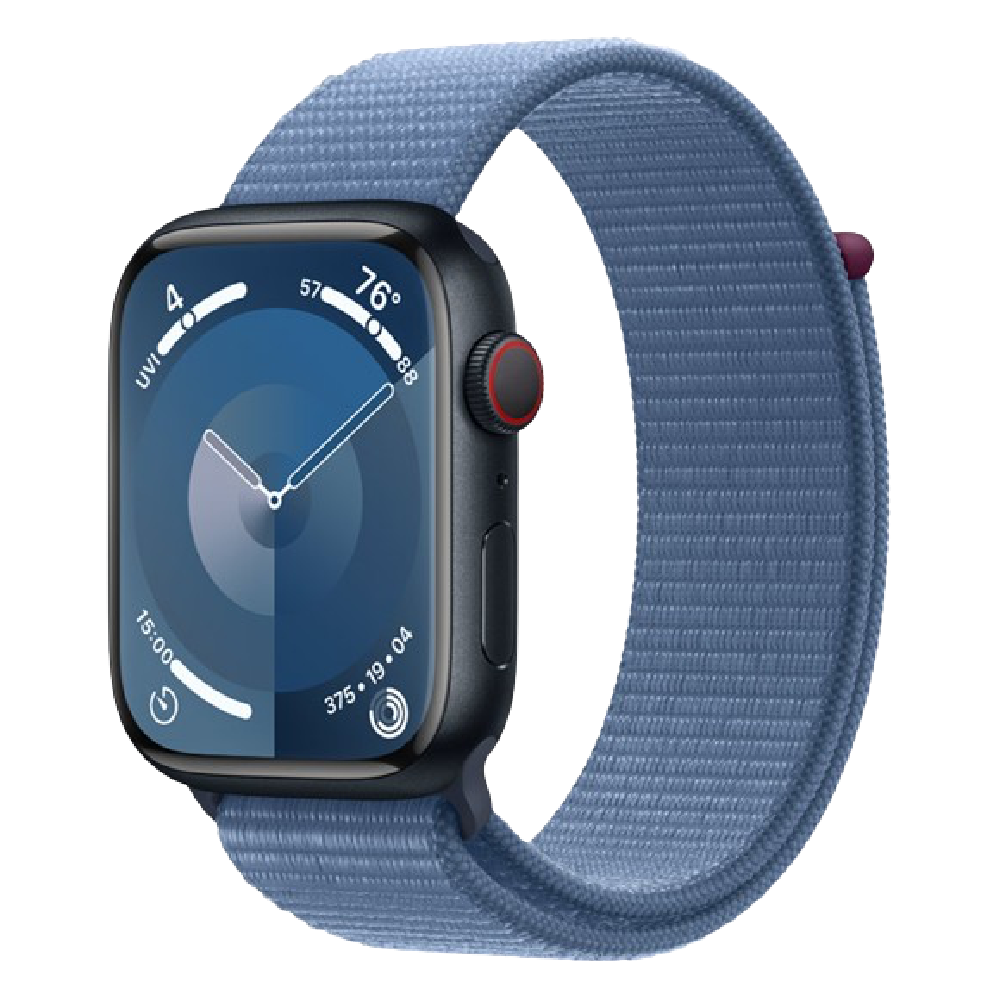
Apple Watch Series 9
Apple Watch Series 9 packs in a new, more powerful processor, a brighter display capable of up to 2,000 nits peak brightness, Apple's U2 chip that enables precision-finding of your iPhone, as well as better HomePod integration, and a whole slew of features and tech you'd expect.
Frequently Asked Questions
How to check if your Apple device has Apple's own silicon?
All the iPhones, iPads, and Macs on the market right now are powered by Apple's own silicon. The iPhones and select iPad models are powered by the A-series chips, while the remaining iPads and all Mac computers use the company's M-series chips.
What's Apple's latest silicon?
Apple recently launched the new A17 Pro chip that is powering its new iPhone 15 Pro and the iPhone 15 Pro Max. Before that, the company announced the M2 Ultra earlier in June this year, which is now powering its Mac Studio and Mac Pro computers.
What's Apple's next silicon?
Apple was expected to launch the M3 chip for the MacBook Air and the iMac at some point in 2023, but it appears to have been pushed till 2024. We'll continue to update this space with more info, so stay tuned.
Is Apple Silicon better than Intel?
Looking at the differences in performance and power consumption, Apple's own silicon definitely has more advantages over the Intel chips for Macs. They typically perform better while consuming less power. So they're both powerful and power-efficient.
Why is Apple Silicon faster?
A lot of different factors affect the overall performance of Apple Silicon. For instance, Apple uses memory that's integrated into the chip itself, thereby reducing any latencies. It's designed to serve large chunks of data in as little time as possible. That's not to mention that Apple Silicon adopts the Arm architecture, allowing it to maintain a higher performance for longer, without overheating or consuming too much power, when compared to Intel's x86 architecture.
Final Thoughts
Apple's transition to its own silicon was inevitable, given how the company likes to have a tightly-knit ecosystem of products. Being able to design both hardware and software for a particular product allows Apple to truly customize and refine the experience with many benefits. We expect Apple to keep churning out new and innovative SoCs in the future too, so be sure to keep an eye on this page as we'll continue to update it with new info over time. Alternatively, you can also join our XDA Forums to discuss and have meaningful conversations about Apple devices, their own silicon, and more.

